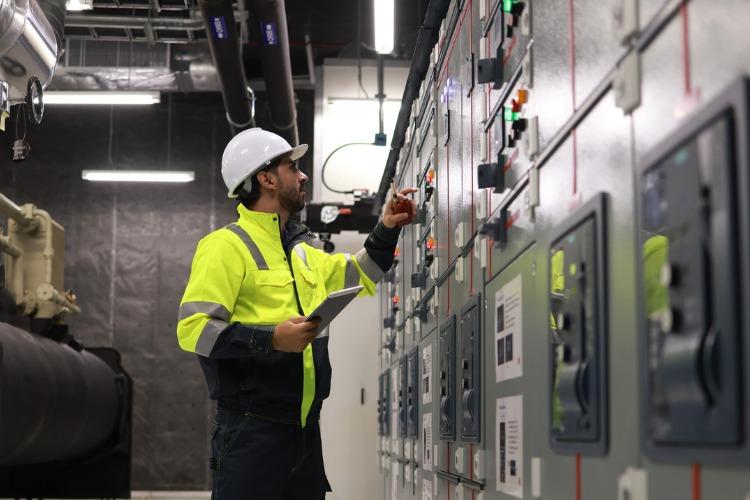Proactive Maintenance Strategies for Subsea Electrical Systems
Subsea electrical systems are critical to the functioning of offshore operations. Ensuring these systems are well-maintained can prevent costly downtimes and enhance the overall safety of underwater projects. By implementing proactive maintenance strategies, companies can avoid potential failures and extend the lifespan of their equipment.
In this article, we’ll explore several proactive maintenance strategies for subsea electrical systems. We’ll cover routine inspections, condition monitoring, insulation resistance testing, and the importance of using reliable materials.
Routine Inspections
By regularly examining subsea electrical systems, technicians can identify issues before they escalate. Inspections should include checking for physical damage, corrosion, and wear on cables and connectors.
Technicians should also verify that all connections are secure and that there are no signs of overheating. Regular inspections help ensure that any minor issues are promptly addressed, reducing the risk of major failures.
Detailed documentation during inspections is essential. Keeping records of each inspection allows for better tracking of the system’s condition over time, helping to identify recurring issues and trends that may indicate underlying problems.
Condition Monitoring
Condition monitoring involves continuously assessing the health of subsea electrical systems using advanced technologies. This method allows for real-time data collection, providing insights into the system’s performance and identifying potential problems early.
Sensors can monitor various parameters such as temperature, pressure, and electrical load. These sensors can detect anomalies that may indicate a problem, allowing for quick intervention before a failure occurs. For example, a sudden increase in temperature might suggest overheating, prompting an immediate inspection.
Implementing condition monitoring systems can significantly reduce downtime and maintenance costs. By catching issues early, companies can plan maintenance activities during scheduled downtimes rather than reacting to unexpected failures.
Insulation Resistance Testing
Insulation resistance testing is a crucial part of maintaining subsea electrical systems. This testing measures the resistance of the insulation material that surrounds electrical conductors. High insulation resistance is essential for preventing electrical leaks and ensuring the safety and efficiency of the system.
Regular insulation resistance testing can identify degradation in the insulation material before it leads to a failure. Viper Innovations provides insights into the )importance of insulation resistance testing, highlighting key factors and benefits. For more detailed information on insulation resistance testing, you can visit Viper Innovations.
Performing these tests periodically helps in maintaining the integrity of the electrical system. Any detected decrease in insulation resistance can be addressed promptly, preventing potential short circuits or electrical failures.
Using Reliable Materials
The choice of materials for subsea electrical systems plays a significant role in their longevity and reliability. Using high-quality, durable materials can reduce the frequency of maintenance and the likelihood of failures.
Materials used in subsea environments must withstand harsh conditions, including high pressure, corrosion, and biofouling. Selecting materials that are resistant to these factors ensures the system remains functional for longer periods. For example, using corrosion-resistant alloys for connectors and cables can significantly extend their service life.
Investing in reliable materials may have a higher upfront cost but leads to long-term savings by reducing maintenance needs and preventing costly repairs. High-quality materials also enhance the safety and reliability of the entire subsea operation.
Predictive Maintenance
Predictive maintenance takes condition monitoring a step further by using data analytics to predict when a component is likely to fail. This strategy relies on historical data, real-time sensor readings, and advanced algorithms to forecast potential issues.
By analysing patterns and trends, predictive maintenance can provide precise maintenance schedules, reducing the likelihood of unexpected breakdowns. For example, if a particular component consistently shows signs of wear after a certain period, predictive maintenance systems can schedule its replacement before it fails.
The benefits of predictive maintenance include reduced downtime, optimised maintenance schedules, and lower operational costs. This approach ensures that maintenance is performed only when necessary, avoiding unnecessary interventions and extending the lifespan of components.
Training and Skill Development
The effectiveness of any maintenance strategy depends heavily on the skills and knowledge of the personnel involved. Regular training and skill development are crucial for ensuring that maintenance teams are equipped with the latest techniques and best practices.
Training programmes should cover various aspects of subsea electrical systems, including inspection techniques, condition monitoring, and the use of diagnostic tools. Staying updated with the latest advancements in technology and industry standards can significantly enhance the efficiency of maintenance operations.
Furthermore, cross-training personnel in different areas of subsea maintenance can provide a more versatile workforce, capable of addressing a wider range of issues. Investing in the continuous development of the maintenance team not only improves the quality of maintenance but also boosts morale and job satisfaction.
Implementing Redundancy
Redundancy is a key strategy in ensuring the reliability of subsea electrical systems. By having backup components and systems in place, companies can prevent a single point of failure from causing significant downtime.
Redundant systems can include backup power supplies, duplicate communication lines, and alternative pathways for electrical currents. In the event of a failure in the primary system, the redundant system can take over, ensuring continuous operation.
Implementing redundancy requires careful planning and investment but pays off by significantly enhancing the system’s resilience. This strategy is especially important in critical operations where downtime can lead to substantial financial losses or safety risks.

